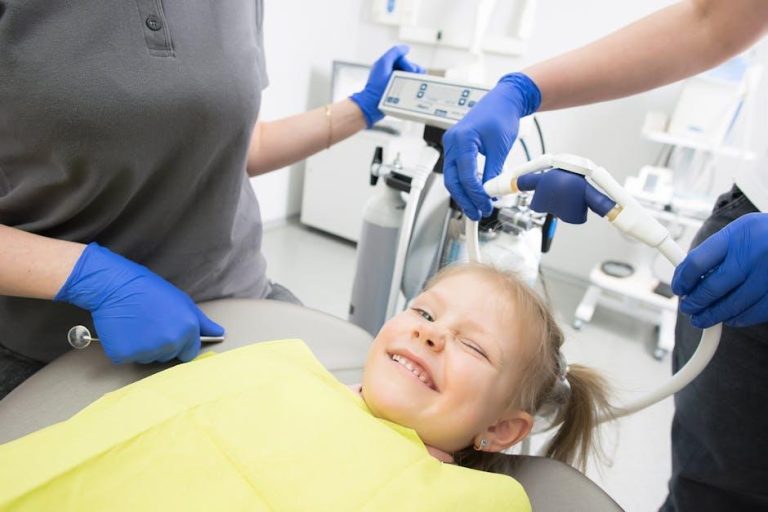1 in 3 Kids Has Dental Problems, Poll Finds
Published by U.S. News & World Report
Introduction: A Growing Concern in Children’s Oral Health
Dental health is a critical component of overall well-being, especially for children. Recent findings from a comprehensive national poll reveal that 1 in 3 kids in the United States suffers from dental problems. This alarming statistic highlights significant challenges in pediatric oral health, affecting children’s quality of life, development, and future dental outcomes. In this article, we delve into the causes, implications, and practical tips to help concerned parents and caregivers ensure better dental health for their kids.
Poll Summary: What the Data Reveals About Children’s Dental Health
The poll surveyed thousands of families across the country, assessing the prevalence of dental issues among children. The results were eye-opening:
| Dental Problem | Percentage of Affected Children |
|---|---|
| Tooth Decay (Cavities) | 25% |
| Gum Inflammation (Gingivitis) | 10% |
| Misaligned Teeth or Bite Issues | 15% |
| Other Dental Problems | 8% |
These figures emphasize the widespread nature of pediatric dental problems, with tooth decay being the most common condition. Early intervention plays a pivotal role in preventing complications.
Key Factors Contributing to Childhood Dental Problems
Understanding what causes dental issues in children helps parents take preventative action. The poll identified several contributing factors:
- Poor Oral Hygiene: Inadequate brushing and flossing routines lead to plaque build-up and cavities.
- Dietary Habits: High consumption of sugary snacks, juices, and sodas promote tooth decay.
- Lack of Regular Dental Checkups: Skipping dental visits delays diagnosis and treatment.
- Socioeconomic Barriers: Limited access to dental care disproportionately affects low-income families.
- Fluoride Exposure: Insufficient fluoride, which protects tooth enamel, increases vulnerability.
The Impact of Dental Problems on Children’s Health and Well-being
Dental problems extend beyond simple cavities and discomfort; they can significantly affect a child’s daily life and development:
- Pain and Discomfort: Untreated cavities cause toothaches, impacting sleep and concentration.
- Difficulty Eating: Dental pain may lead to poor nutrition and weight issues.
- Speech Development: Dental alignment issues can interfere with speech clarity.
- Self-Esteem: Visible tooth decay or misaligned teeth can impact confidence and social interactions.
Practical Tips to Prevent Dental Issues in Kids
Prevention is key to reversing the trend of increasing dental problems among children. Here are effective tips to maintain optimal oral health:
- Establish a Dental Routine: Encourage brushing twice daily with fluoride toothpaste and flossing once daily.
- Limit Sugar Intake: Reduce sugary snacks and drinks; opt for water and nutritious foods.
- Schedule Regular Dentist Visits: Biannual dental checkups allow for early detection and treatment.
- Use Fluoride Products: Fluoride toothpaste and treatments strengthen teeth and prevent decay.
- Lead by Example: Parents maintaining good oral habits motivate children to follow suit.
Case Study: Turning Around Dental Health Through Early Intervention
Meet Ella, a 7-year-old who struggled with cavities and gum inflammation. After a routine dental visit, her parents were guided on lifestyle changes and dental care techniques. Within six months, Ella’s dental health improved dramatically. Key factors that contributed to her turnaround included:
- Regular professional cleanings and fluoride varnish applications.
- Improved daily brushing and flossing routines, supervised by her parents.
- Redirecting snacking habits from sugary treats to fruits and cheese.
- Consistent dental monitoring and timely treatments.
Ella’s story showcases how awareness, education, and proactive dental care can prevent and even reverse common dental problems in children.
Answers to Common Questions About Children’s Dental Health
| Question | Expert Answer |
|---|---|
| When should my child first see a dentist? | By their first birthday or within six months after the first tooth erupts. |
| How often should kids brush their teeth? | At least twice a day with age-appropriate fluoride toothpaste. |
| Are baby teeth important to care for? | Yes, they maintain space for permanent teeth and ensure proper speech and chewing. |
| What foods help maintain strong teeth? | Dairy products, vegetables, nuts, and water are great for oral health. |
| How can I reduce my child’s fear of the dentist? | Start dental visits early, explain the process positively, and choose kid-friendly dentists. |
Conclusion: Prioritizing Children’s Dental Health Saves Smiles
The recent poll underscoring that 1 in 3 kids has dental problems in the U.S. is a wake-up call for parents, caregivers, and healthcare providers. By understanding the causes, recognizing the impacts, and consistently applying prevention strategies, we can protect our children’s smiles and ensure their bright, healthy futures. Remember, taking care of children’s oral health today reduces dental complications tomorrow.
For more expert advice and resources on children’s dental health, stay tuned to U.S. News & World Report.


